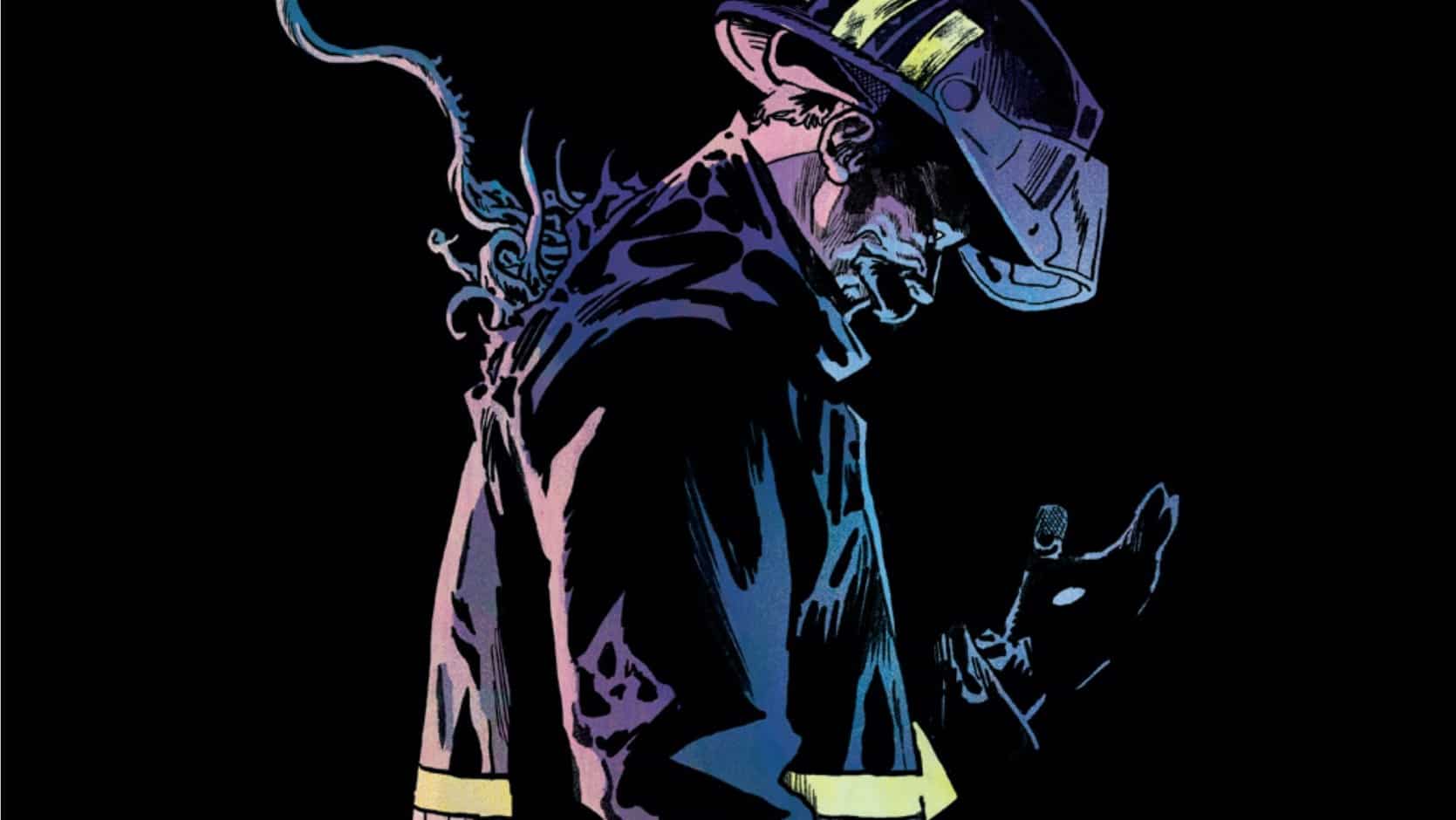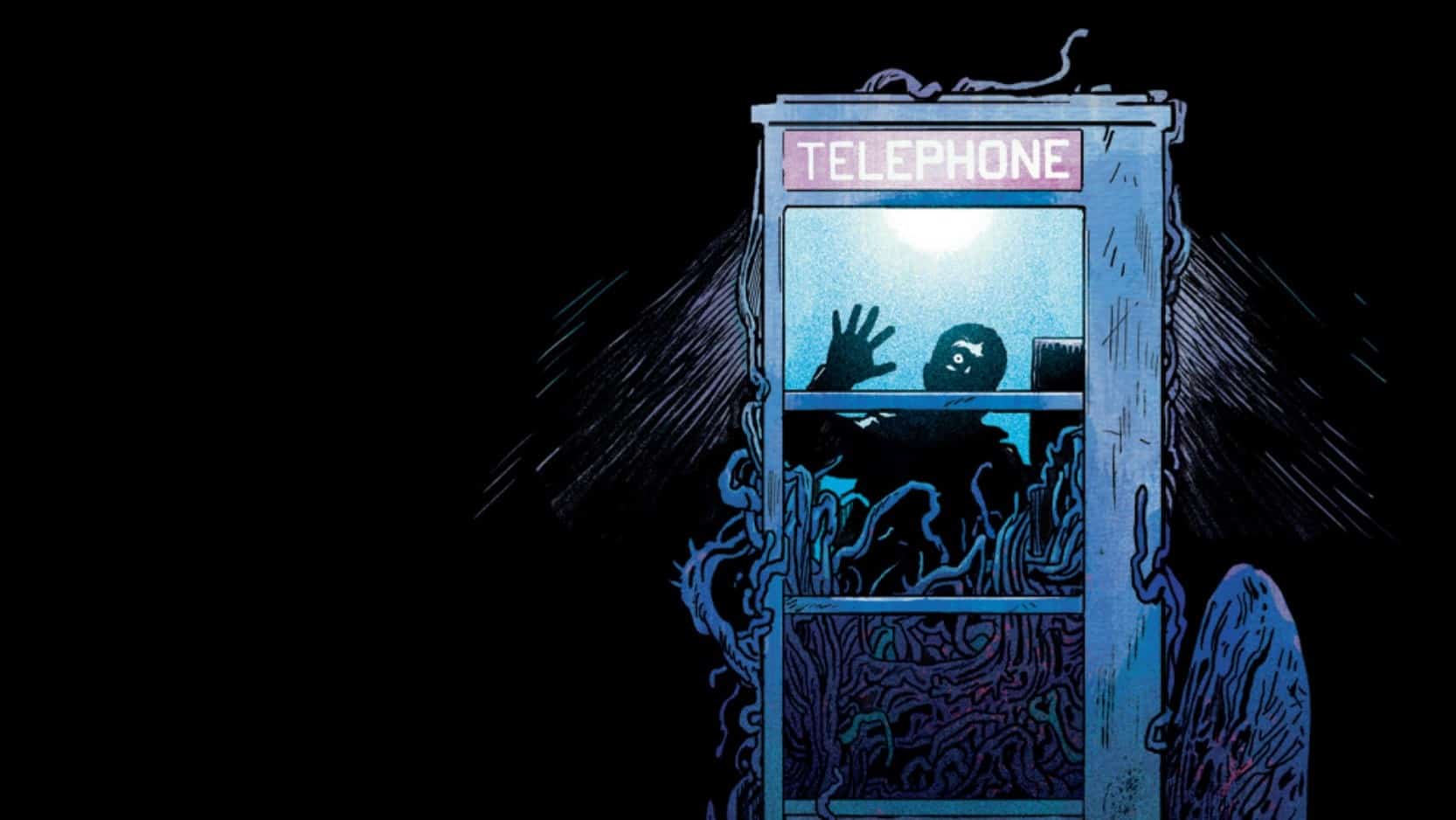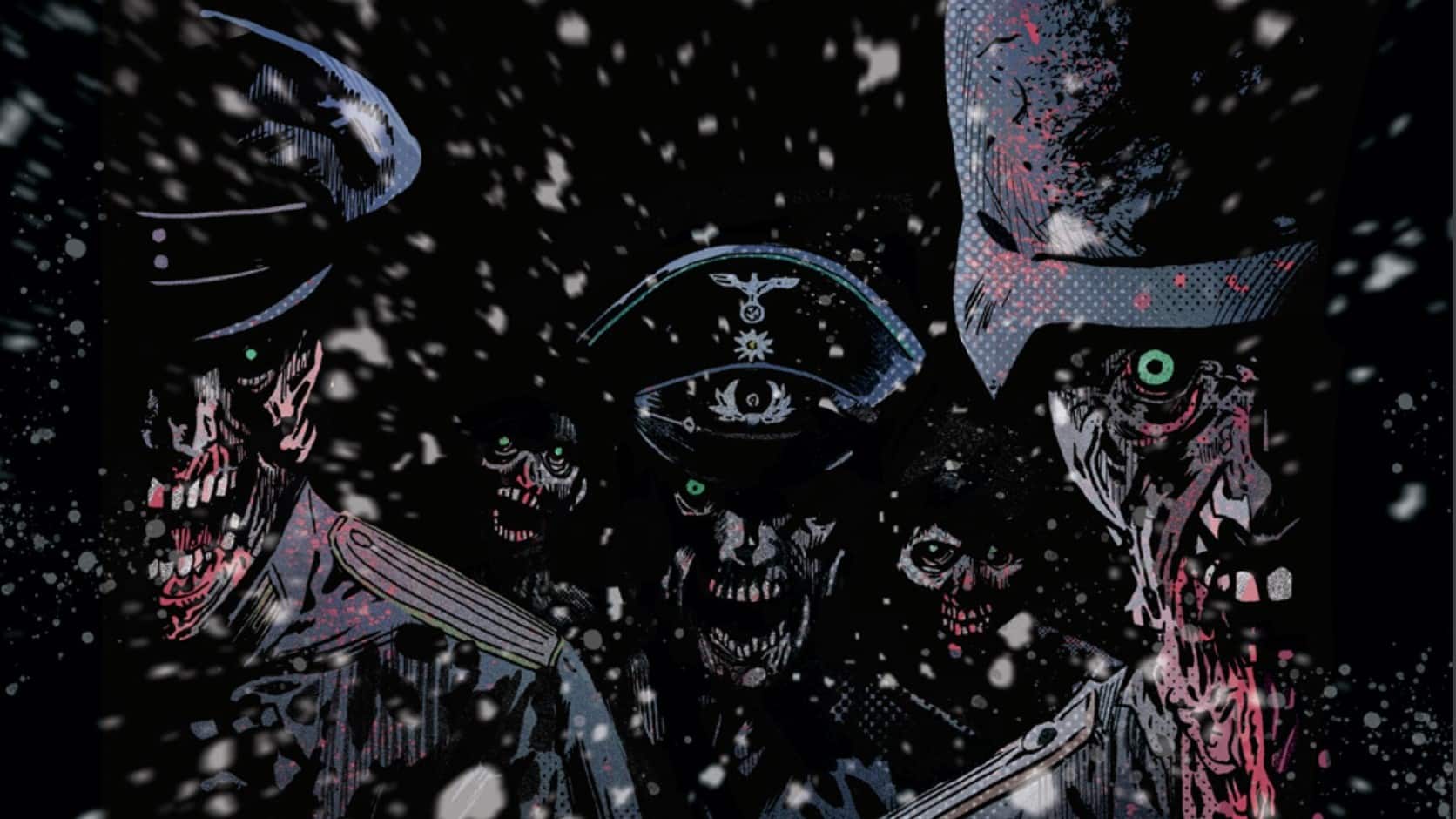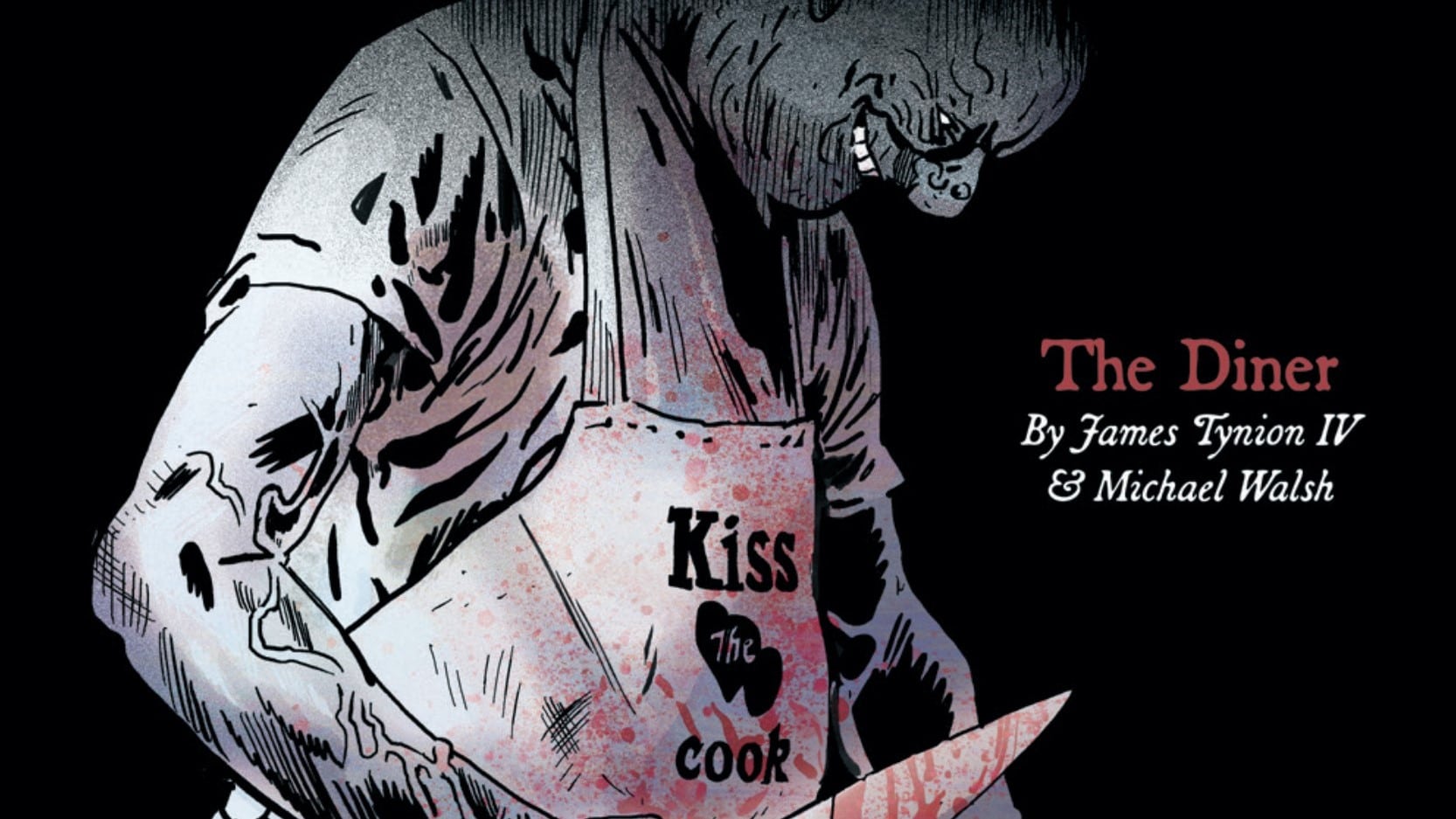Michael Walsh explores the lost years of the Coin, bringing the reader deeper and deeper “Into The Fire,” in Image’s The Silver Coin #15, featuring color assists by Toni Marie Griffin.
Ritesh Babu: And so we return yet again, for an issue that closes off the arc, and also puts the book on pause for a little bit. How are you feeling, Mark?
Mark Turetsky: You know, looking into the mind of a sociopath for 25 or so pages is … not the greatest experience in the world? Don’t get me wrong, it’s a really well done comic, but the sort of relentlessness of Louis’ point of view can be, well, off-putting.
Ritesh: Yeah, no, I get you. This issue is another “closer,” wherein everything that we’ve seen prior seems to get some additional context or a measure of reframing from another perspective. We see it a wee bit differently. And we see it, specifically, from the point of view of Louis, who is a wretched monster. Walsh’s cartooning in this is just jaw-droppingly good. It always is, but I was struck by a number of moments in this. What a horrifying yet pathetic man this is.
Mark: And it’s a story that takes us right back to the very first issue of the series, which ends with a fire at a music club (a disco inferno, if you will). And the first page of this issue is the final page of the first issue, albeit with new captions/dialogue, and, I think somewhat more importantly, recolored as well. Have a look at the two images:
The new coloring adds to this scene … I want to say hopefulness. You’re still staring at a charred corpse and someone is looting it, but it’s rosier. And it’s reflected in the caption: “Today, everything changed.” And speaking of the captions, I really like Walsh’s lettering on these “diary” captions. Louis’ handwriting is distancing, it’s somewhat hard to read sometimes. There’s a point later on in the comic where the caption just says, “the coi–” and literally trails off.
Ritesh: I’m really glad you brought up the lettering. Because that’s the first and biggest thing that blew me away this issue. I know stylized lettering that perhaps takes a second or two to parse isn’t everyone’s favorite. But the way Walsh letters the work throughout this issue is just phenomenal and shows so many fun, cool choices made. And it all works. The textural quality of the handwriting, and the literal “writing over” of the scene we’ve seen and experienced before, with tweaks to convey the shift in perspective/experience of that moment? Rules. There’s a lot of lettering with real personality here. It’s none of that nonsensical “good lettering is invisible” nonsense. No, you notice it. It actively adds to everything. Its purpose isn’t just to exist. It’s doing way more. And Walsh understands that.
Mark: And I think one of the major differences in this issue is that Louis starts out as a monstrous person. It’s not like the Coin is exploiting some weakness or trait in him, dredging something up out of an otherwise normal person. Most of the people who pick up the Coin burn out (or up) pretty quickly. Here, the Coin is with him for years. It’s a symbiosis. We see some of the scenes from his childhood, like him leading a friend into the woods (What the hell happened there?!) or playing with a deer carcass. When he shows up at the scene of a fire that killed hundreds of people, his biological response is to become hungry at the smell of burned meat, not to be disgusted by it. Or even disgusted at himself for having that subconscious reaction to it. And the Coin stays with him until Louis is overtaken by physical illness (I’m guessing it’s lung cancer).
Ritesh: And much like he devours and devours, feeling this ravenous hunger, he himself is being devoured whole. That’s the symbiosis. That’s the contract. Those are the terms of the deal, even if he doesn’t truly realize it until it’s all too late. In a book that’s been so regularly concerned about our greed and our capitalist systems that at once consume us and make us into consumers for its purposes, that feels like a pointed idea.
That in the end he’s nothing but an empty husk, swallowed away, emptied out, eaten away down to the bone and left like he never was? It’s horrifying. The worm protruding from the insides of the man via the mouth is consistently a terrifying image, repeating throughout the image. He’s not human. He’s something else, and he’s possessed by an inhumane idea, quite literally. It’s a lot.
Mark: And while he doesn’t notice the months and years going by, we see him progress from having a full head of dark hair to being nearly completely bald, gaunt and gray. It’s a rough eight years! And especially foreboding is the “KLANG”ing popping in and out of panels in the second half of the issue. You’re left thinking, “What’s this guy hearing? Is it even real, or is he hallucinating?” And of course, there’s the revelation that he’s been keeping Linda, his wife, alive in the basement for years. You hear these stories about people being kept captive for years and their captors leading more or less normal lives, with nobody suspecting.
We do see one scene with one of Linda’s coworkers in a hardware store (where Louis is buying, among other things, a very prominent shovel). And while the man who interacts with Lou is put off by him, we get more of an impression of pity and discomfort than of any real suspicion, even though Louis sees himself as some kind of millipede monstrosity.

Ritesh: Right! His mundane monstrosity is what’s really sickening. It’s just everyday and constant for him. His venomous contempt for people, including the one person he should care for the most, it’s sad to see. He sees no worth or value in people, which is why he’s willing to hurt and harm them in such grotesque ways. That is their only worth to him, the spectacle. The horrifying, painful spectacle.
He’s a human parasite, being fed on by another parasite. The sequence of pages wherein we flash back to all of those horrors he’d helped facilitate throughout the book, with the single panel of “More” punctuating each one? Incredibly memorable and striking. They depict his sheer ravenous hunger and how nothing is enough and nothing will be enough. It’s fitting then that it holds true for his parasitic host as well, as nothing Louis gives proves enough to save him in the end. He thinks he’s safe. But he’s really not. He perpetuates the very ideology that will devour him and destroy his existence. And when that moment comes? When his own philosophy is pit against him? He doesn’t take it well. It’s not so fun for him anymore.
It’s just scary and sad. It’s just death and silence. Nothing else.
Mark: “I did everything he asked …” He’s the Willy Loman of serial killers.
The ending we get to this issue is the flip side of the start of issue #3, where some teens break into Louis’ house and kill him. Well, it certainly seemed like they killed him back then, but now it seems like “the thing in his chest” is what actually did him in. The teens set fire to the house to hopefully cover up their robbery and murder, and we see that Linda is still alive, after we’d last seen her getting hit in the face with a crowbar. And she manages to escape, breaking her own hand in the process and fighting through flames. Between her and Audrey, the teen girl who could talk to animals in the previous Walsh issue (#10), we now have two women who’ve escaped the Coin (and as a side note, that issue opens with a raccoon demanding “More. More.” french fries from her). In Linda’s case, we see that she rescued Louis’ diary from the fire. Do you think we’ll ever see them again? Maybe at some point they’ll team up with Karena from issue #13 and pool their knowledge about the Coin.
Ritesh: I suspect we will. The book is a slow build on this front, but I reckon there’s some kinda plan, or a sense of one, as to where things are headed in the macro, even if it is an anthology. For now, though? It breaks at #15, which feels perfect. That’s five issues per volume, three volumes, and ideal for the book store market. He really found the ideal place to pause the series, numbering wise. I’m really excited for it to come back and what it’ll look like when it does. But until then, I’m gonna appreciate what all has been done in it so far. This is just remarkably strong horror comics work, centering the artist/visual storyteller over the usual “writer” importance, as it is the writers who are cycled in and out throughout, with the artist being the centerpiece of it all. It’s incredible.
Mark: Yeah, I’m happy to leave these all as separate stories in an anthology, but the mythology that Walsh et al have created invites this sort of thinking and does it in a way that’s not intrusive on the individual stories. You could theoretically read this issue in isolation and have an easy time of it.
I hope we’ll still cover this series when it comes back. It’s been a pleasure writing these up with you, Ritesh.
Ritesh: Likewise!







